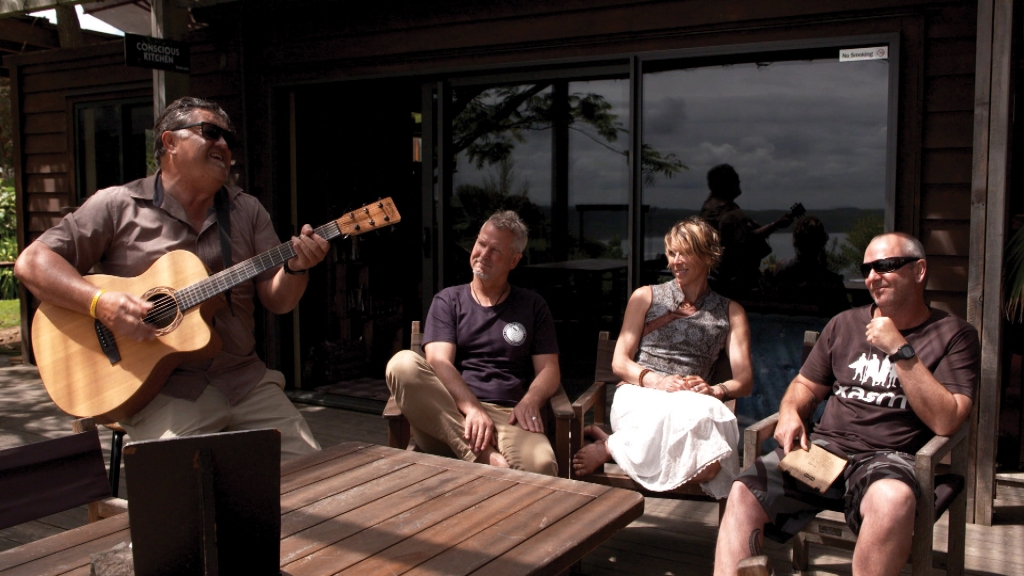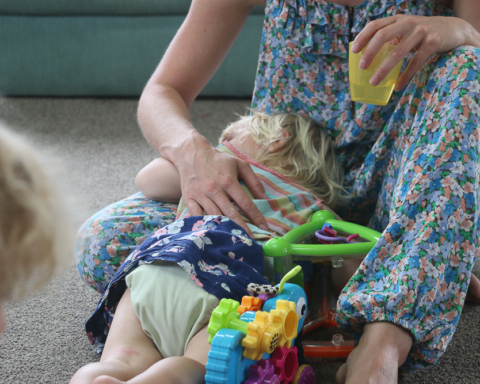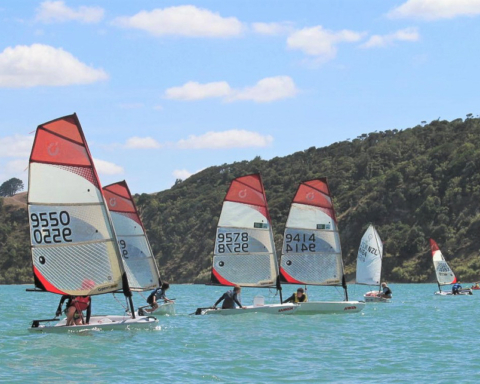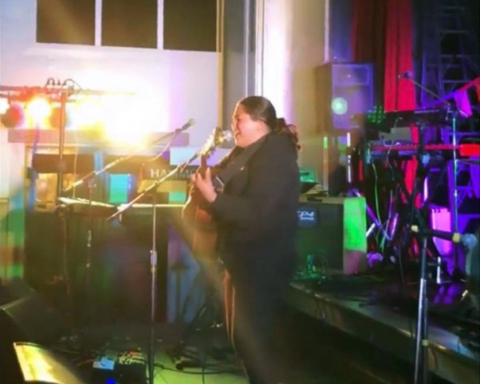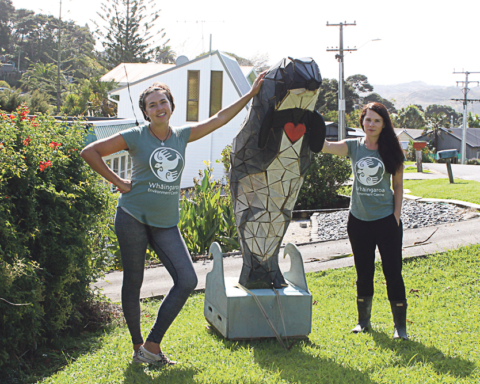Noted New Zealand artist Robin White took a trip down memory lane to Raglan over the Christmas/New Year holidays – and found her home town as a teenager “changed out of recognition”.
“It wasn’t like this,” she told the Chronicle, taking in Oram Park on one side of Nihinihi Ave and the 1960s house her father built overlooking the estuary on the other. “Everything looked so different.”
Robin recalled Nihinihi Ave as a metal road and just a few baches back then.
There was no reticulated water or sewerage and only a carry can for a toilet, she said, standing by the shed her family lived in on the property until their “very simple” two-bedroom house was ready to move into.
“I loved living by the sea and being on my own,” the celebrated Kiwi painter and printmaker who in 2003 was made a Dame, revealed of her time here. “I spent hours pottering around the estuary (at the bottom of the section) … fishing for herrings and mullet … or out in the dinghy.”
She remembered Wayne Petchell – who went on to run his family’s Bow St supermarket for many years – exercising his racehorse on the beach, and the Kereopa boys riding their horses into town.
“And I had my first driving lesson on the airstrip,” the 72 year old added as she looked out across the estuary. “Camp end.”
Robin did her fourth and fifth form years (now years 10 and 11) at Raglan District High School, as the area school was then known, where her interest in art was nurtured.
“I did art to School Certificate (level) at Raglan,” she revealed to colourful Martinborough publisher Alister Taylor in his lavish 1981 book ‘Robin White, New Zealand Painter’.
“My teacher was a man who wasn’t an art teacher but he was very interested in art himself. He somehow got me through School Certificate. Art was the highest mark of all my subjects, but it wasn’t particularly high.”
She later boarded at Epsom Girls’ Grammar and then went on to Elam School of Fine Arts, where she rated the celebrated Colin McCahon as “the most influential of all my lecturers”.
Robin – who now lives in Masterton – was back in town briefly between Christmas and New Year for the unveiling of Tex Rickard’s memorial at Poihakena Marae alongside that of his land rights activist wife Eva, a Kereopa.
She told the Chronicle her father, Albert Tikitu White, had been great friends with Tex back in the day and both grew large crops of kumara in Raglan’s “perfect” sandy soil.
“Dad built a huge box in the garage where he stored the kumara,” she laughs. “He used to give away sacks of it at Christmas … and swap with the Kereopa clan for kaimoana.”
Robin said it was wonderful to see how the local land has since been reclaimed, nurtured and developed. She was also impressed at all the activity on the marae, from the kohanga to the carving school.
“It is alive and well,” she said, acknowledging the groundwork of an earlier generation.
Robin’s work through to the early 1980s focused, as Alister Taylor noted, on the “landscape in which she lives and the people whom she knows and loves”.
While paintings like ‘Sam Hunt at the Portobello Pub’, ‘Mana Railway Station’ ‘Mangaweka’ and ‘Fish and chips at Maketu’ rank among her best known works from the period, her catalogue also included locally inspired paintings of her family home in Nihinihi Ave and a series of watercolours entitled simply ‘Sandhills, Raglan’.
For the Raglan paintings she worked from her old sketches and photographs from that time.
Robin immersed herself during the 80s and 90s in the island lifestyle of remote Kiribati in the central Pacific, turning her hand to woodcuts and other styles of art which still influence her today.
She has represented New Zealand at a number of international exhibitions, and in 2017 won the NZ Art Awards Laureate title which helped her continue collaborations with Pacific artists.
Robin was made a Distinguished Companion of the New Zealand Order of Merit in 2003.
Edith Symes





